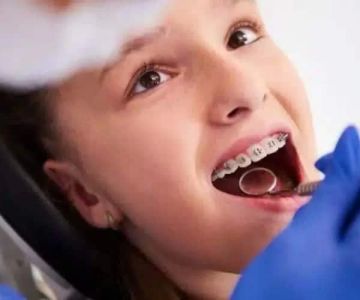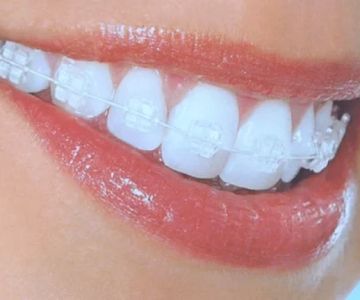Can Bite Issues Worsen as a Person Ages?
As we age, various aspects of our health and physical well-being can change, sometimes in surprising ways. A common area often overlooked is our dental health, particularly bite issues, or malocclusion. While many consider bite problems primarily a concern for the young, aging can exacerbate these issues, leading to further dental complications. Factors such as tooth wear, loss of teeth, and changes in jaw structure can all play a role in altering how teeth come together over time. This article delves into the causes, implications, and potential solutions for bite issues that may worsen with age, with a focus on informing readers based in the United States.
The Dynamics of Bite Changes Over Time
As individuals age, the dynamics of their bite can alter significantly due to multiple changes in the oral environment. One of the primary reasons is the natural wear and tear of teeth over the years. Enamel, the hard outer surface of teeth, gradually wears down with use, especially in people who grind their teeth or have a heavy bite. This can lead to a misalignment that wasn't present in one’s youth. Additionally, loss of teeth due to decay or periodontal disease can lead to adjacent teeth shifting position, which often results in altered bite patterns. The jaws themselves can undergo structural changes due to bone loss, especially in those who suffer from osteoporosis, affecting how the upper and lower set of teeth align.
The Consequences of Worsening Bite Issues
Failing to address worsening bite issues can have significant ramifications for both oral health and overall well-being. Misalignments can lead to increased wear on teeth, causing fractures or requiring complex dental interventions like crowns or bridges. Improper bite can also contribute to temporomandibular joint disorders (TMJ), which manifest as jaw pain, headaches, and clicking or popping sounds when speaking or eating. Furthermore, a misaligned bite can compromise mastication efficiency, affecting nutritional intake, and potentially impacting systemic health.
Case Studies and Research
Several studies have highlighted the progression of bite issues in aging populations. For instance, research from the American Dental Association indicates that over 30% of adults in the U.S. experience some form of dental misalignment by age 60, compared to only 10% in their 20s. Real-life case studies, documented on platforms such as Dentistry Toothtruth, showcase how addressing these issues early can lead to better outcomes. A notable example involves a 65-year-old patient who underwent orthodontic treatment to correct severe malocclusion, resulting in not only aesthetic improvement but also enhanced functional comfort.
Approaches to Manage and Mitigate Age-Related Bite Worsening
Various strategies can help manage and potentially improve bite concerns as one ages. Regular dental check-ups play a critical role in early detection and intervention. Orthodontic treatments, like braces or aligners, previously considered only a young person’s solution, can be equally effective for adults and seniors. Additionally, prosthetic solutions such as dental implants or bridges may be necessary to restore a functional bite. Maintaining good oral hygiene can prevent further tooth loss and shifting, thereby addressing one of the main contributors to bite issues.
Conclusion: Proactive Measures for Healthy Aging of Your Bite
In conclusion, bite issues can certainly worsen with age due to a variety of reasons, including tooth wear, loss, and changes in jawbone structure. These issues, if left unaddressed, can significantly impact not just oral health but overall quality of life. Therefore, proactive attention to dental health through preventive and corrective measures is crucial. Regular consultations with dental professionals, such as those affiliated with Dentistry Toothtruth, can offer tailored solutions to manage and potentially mitigate these concerns. As such, awareness and action stand as pivotal strategies to ensure that age is just a number, not a limitation, for oral health.




 Westgate Dental Arts
Westgate Dental Arts Coventry Family Dental
Coventry Family Dental Familia Dental
Familia Dental Dr. Daniel S. Fife, DDS
Dr. Daniel S. Fife, DDS Dentistry At Suburban Square: Michael I. Wollock, DMD
Dentistry At Suburban Square: Michael I. Wollock, DMD Comfort Care Dental
Comfort Care Dental The Importance of Oral Health Education During Pregnancy for a Healthy Pregnancy
The Importance of Oral Health Education During Pregnancy for a Healthy Pregnancy Why Skipping Dental Checkups Can Lead to Bigger Oral Health Problems
Why Skipping Dental Checkups Can Lead to Bigger Oral Health Problems Advantages of Porcelain Dental Restorations
Advantages of Porcelain Dental Restorations Best Tips for Brushing Your Teeth Properly for Healthy Gums: Essential Techniques for Oral Health
Best Tips for Brushing Your Teeth Properly for Healthy Gums: Essential Techniques for Oral Health How Can Diabetes Cause Tooth and Gum Problems? Preventing and Managing Oral Health Issues
How Can Diabetes Cause Tooth and Gum Problems? Preventing and Managing Oral Health Issues Healthy Habits for Promoting Good Oral Health and Hygiene: Tips for a Healthy Smile
Healthy Habits for Promoting Good Oral Health and Hygiene: Tips for a Healthy Smile